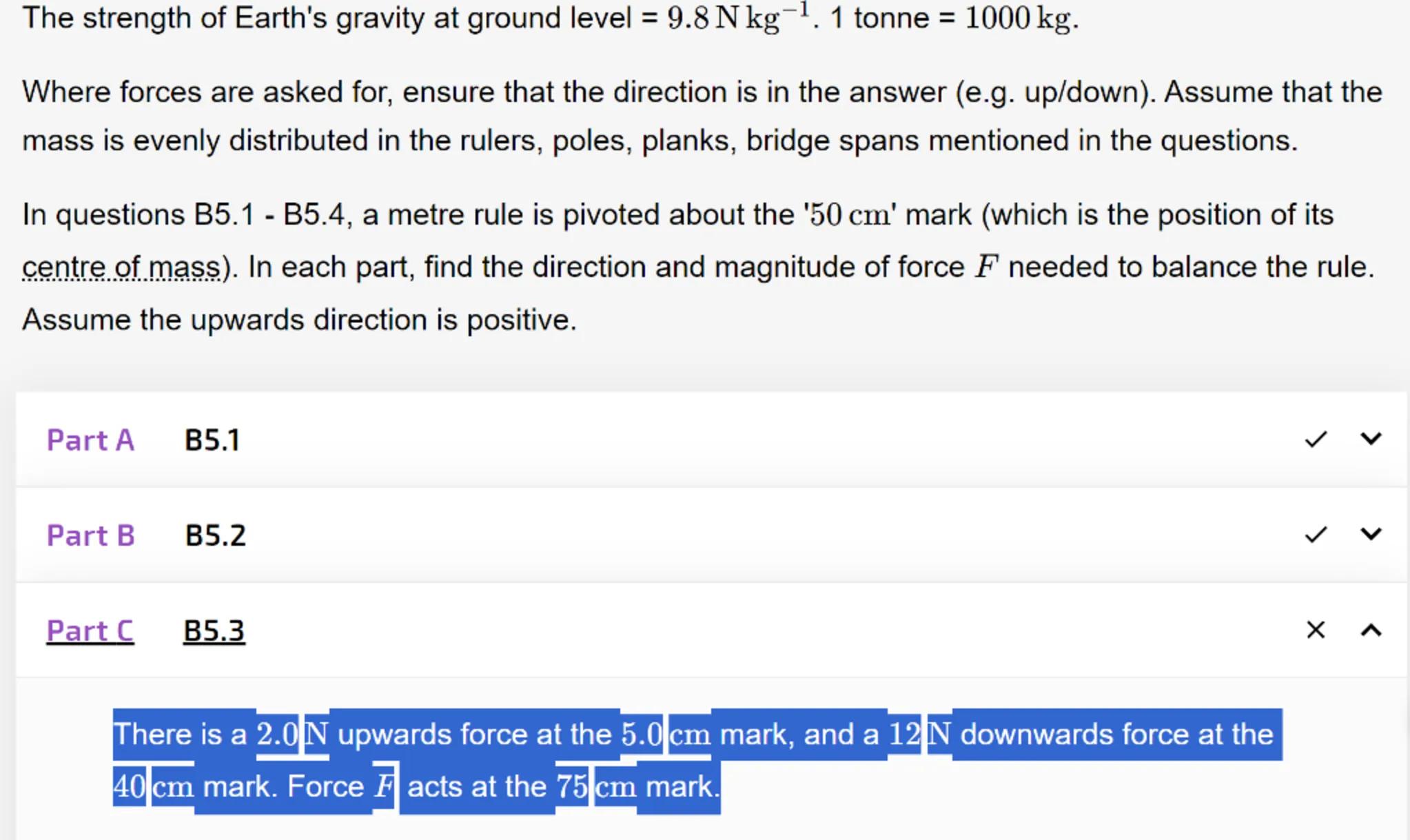
Sia
The strength of Earth's gravity at ground level tonne .
Where forces are asked for, ensure that the direction is in the answer (e.g. up/down). Assume that the mass is evenly distributed in the rulers, poles, planks, bridge spans mentioned in the questions.
In questions B5.1 - B5.4, a metre rule is pivoted about the ' 50 cm ' mark (which is the position of its centre of mass). In each part, find the direction and magnitude of force needed to balance the rule. Assume the upwards direction is positive.
Part A B5.1
Part B B5.2
Part C B5.3
There is a 2.0 N upwards force at the 5.0 cm mark, and a 12 N downwards force at the 40 cm mark. Force acts at the 75 cm mark.

Answer from Sia
Posted 3 months ago
Solution
a
To find the force needed to balance the meter rule, we first need to apply the principle of static equilibrium, which states that the sum of the forces and the sum of the torques acting on the object must be zero. The forces acting on the meter rule are a 2.0 N upward force at the 5.0 cm mark and a 12 N downward force at the 40 cm mark. The force acts downward at the 75 cm mark. Thus, we can write the equation for the sum of the forces: . Rearranging gives us
b
Next, we need to consider the torques about the pivot point at the 50 cm mark. The torque due to the 2.0 N force at the 5.0 cm mark is (counterclockwise). The torque due to the 12 N force at the 40 cm mark is (clockwise). The torque due to the force at the 75 cm mark is (clockwise). Setting the sum of the torques to zero gives us: . Solving for gives us
Answer
The force needed to balance the meter rule is 1.2 N acting downward.
Key Concept
Static Equilibrium: In static equilibrium, the sum of the forces and the sum of the torques acting on an object must be zero. Equations: and .
Explanation
By applying the conditions for static equilibrium, we calculated the necessary force to balance the meter rule considering both the forces and torques acting on it.
Not the question you are looking for? Ask here!
Enter question by text
Enter question by image
Unlock Smarter Learning with AskSia Super!
Join Super, our all-in-one AI solution that can greatly improve your learning efficiency.
30% higher accuracy than GPT-4o
Entire learning journey support
The most student-friendly features
Study Other Question